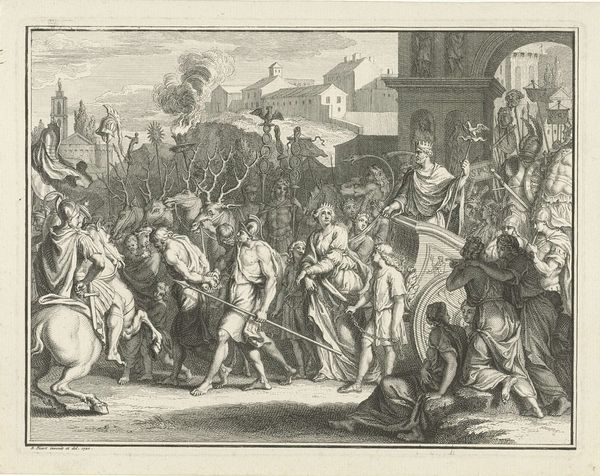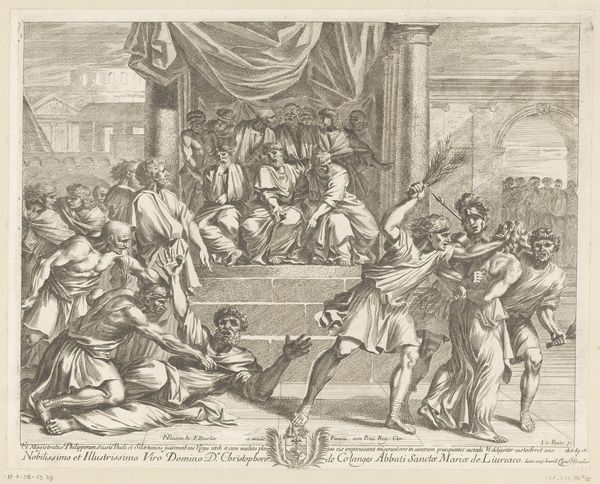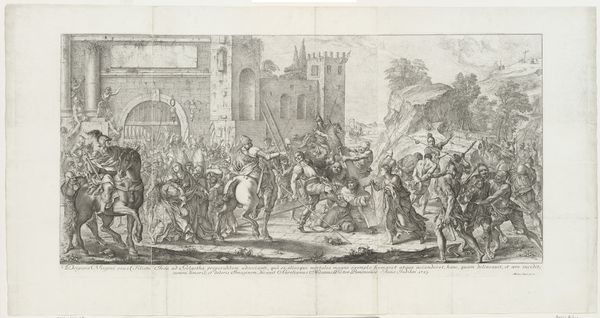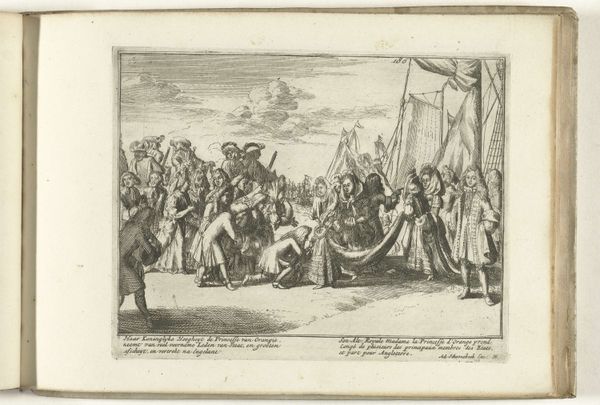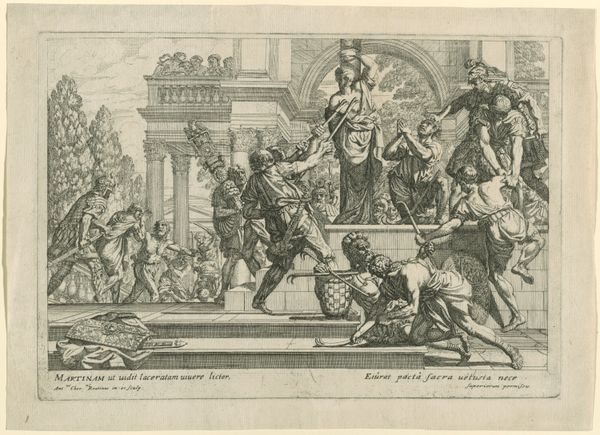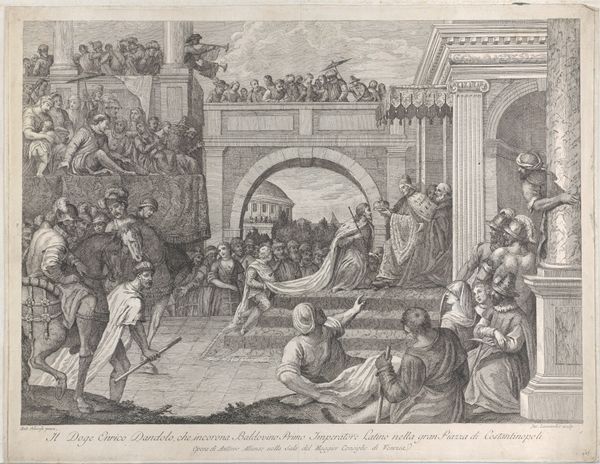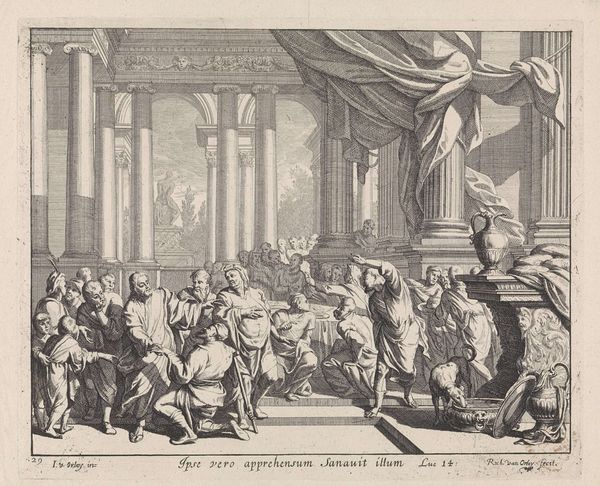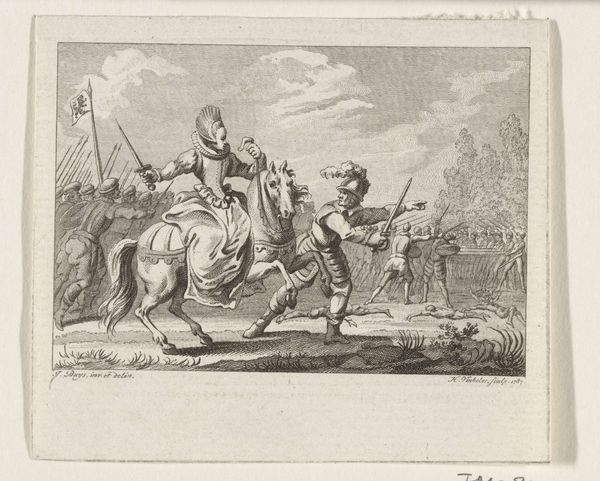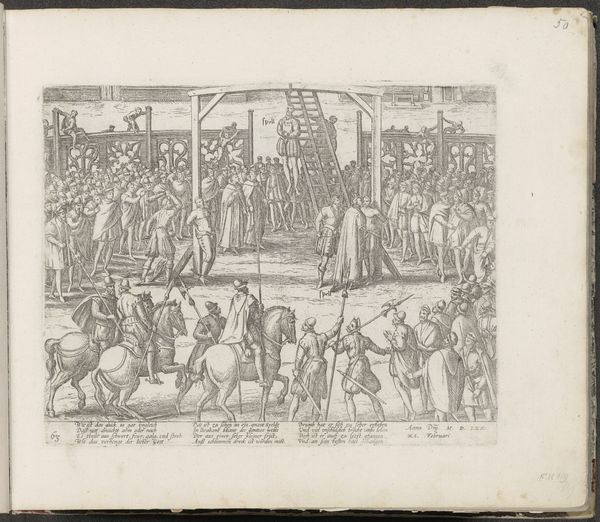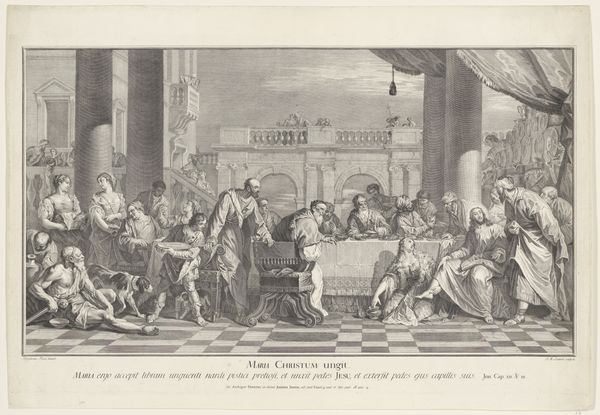
Hendrik IV van Frankrijk te paard die de onderwerping van de Parijzenaars aanvaardt 1757
0:00
0:00
noellemire
Rijksmuseum
print, engraving
#
portrait
#
baroque
# print
#
old engraving style
#
figuration
#
line
#
cityscape
#
history-painting
#
engraving
Dimensions: height 84 mm, width 124 mm
Copyright: Rijks Museum: Open Domain
Editor: This is "Hendrik IV van Frankrijk te paard die de onderwerping van de Parijzenaars aanvaardt", a 1757 engraving by Noël Le Mire, held at the Rijksmuseum. The level of detail is really striking. It almost feels like a photograph, despite being made using such laborious printing processes. What should we be looking at here? Curator: I think it is important to acknowledge that what we see in the final print is a highly mediated version of history. Le Mire wasn’t present at this event, he wasn’t making sketches from life, but translating a representation into another medium. How do you think that affects the meaning of the image? Editor: I guess that the layers of production involved would add another layer of... propaganda? Curator: Precisely! This print wasn't about capturing a "truthful" moment, but about creating and disseminating a very specific narrative of royal authority. Consider the sheer labor invested – the engraver's skill, the materials used, the printing process itself. All that effort reinforces the idea of the King’s dominance. Think, also, of its potential use. Was it commissioned? Who bought it, and why? Editor: Good point. So the materials and the means of production contribute to the artwork's cultural value? I guess prints like this were more affordable and were aimed at the popular classes of the day. Curator: Exactly. This makes them radically different than large-scale oil paintings, typically accessed only by the wealthy elite. And by circulating this image widely, Le Mire and his publishers participated in constructing a particular public memory of Henri IV, impacting perceptions of kingship itself. Editor: That's fascinating. I'll never look at historical prints the same way again. Curator: That is the point of truly looking; you discover a whole other universe hidden in plain sight.
Comments
No comments
Be the first to comment and join the conversation on the ultimate creative platform.

